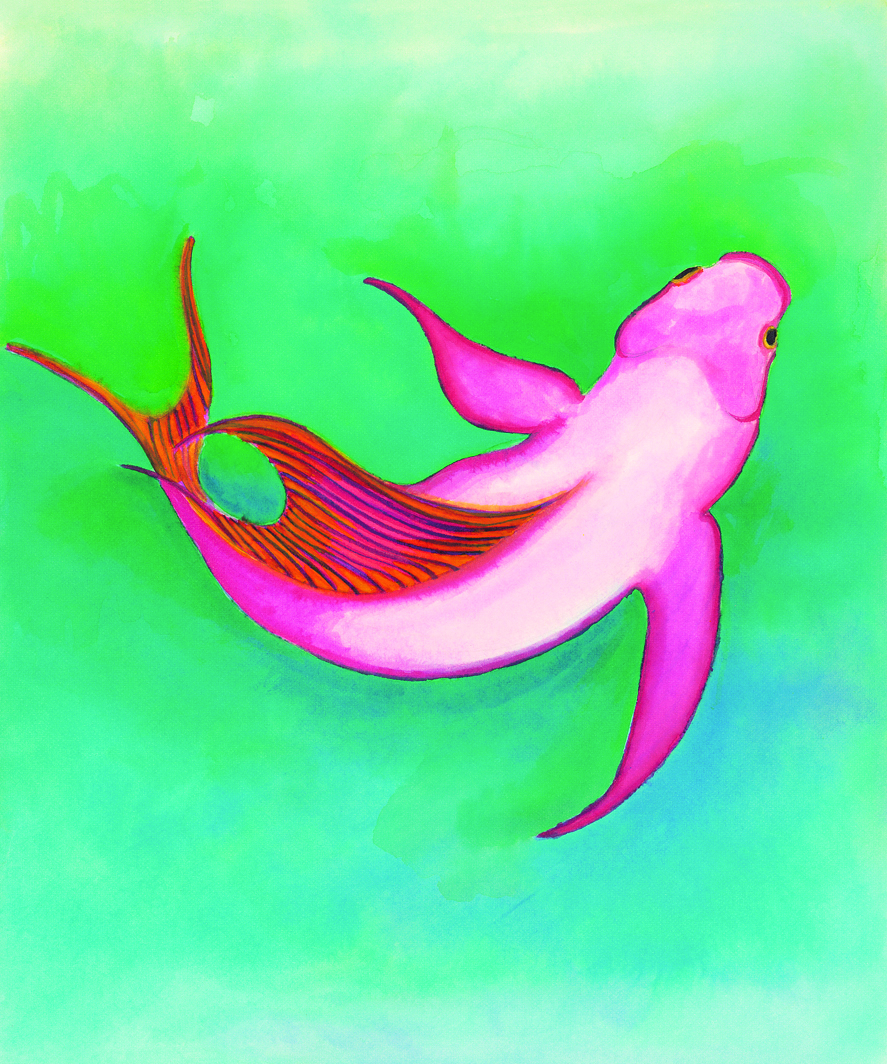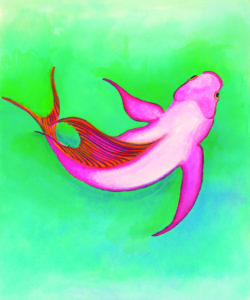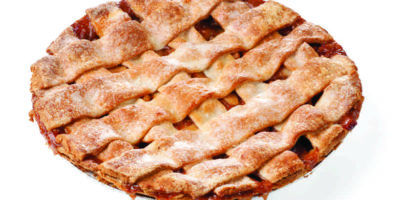
The Bronfman Haggadah

From the Bronfman Haggadah (Illustration by Jan Aronson)
A petite woman with a penchant to surprise you, artist Jan Aronson has an unconventional streak that’s immediately apparent. A bolt of bright red is woven into the auburn locks framing her face, Susan Sontag-like. “The color is called ‘Cherry Bomb’,” she confides.
Aronson’s bold use of color is apparent throughout the original, imaginative illustrations she has made for The Bronfman Haggadah, a new book she has co-created with her husband, philanthropist Edgar M. Bronfman. Together for 24 years, and married for 19, this book marks the first time she and her husband have worked together. He wrote the text, she handled the illustrations. They employ design motifs from Egyptian, Greek, Roman and African cultures, as well as images not usually found in the guide to the seder: biblical maps, feathers as symbols of flight and freedom, vividly detailed mosquitoes and frogs. Among the most striking: a tiny basket carrying baby Moses virtually lost in the vast, lush landscape of the Nile. “I like the things you don’t expect,” she explains. “As an illustrator you want to challenge the imagination and surprise people.”
Born into a Jewish family in New Orleans, Aronson had spent most of her career as a painter, but had never before ventured into illustration. The branching out has been a reinvention that inspired her as an artist. “The whole experience caused me to evolve at an interesting time in my life. At 63 you’re not mid-career, not emerging, but there are still places to go which is very encouraging to me. As a human being, as an artist, change and growth are always possible — you can do it any time.”
Another inspiration for the Haggadah are the secular Jewish views she and her husband share. While the couple might have different styles — “I’m an outdoor dog, he’s an indoor dog,” she lovingly jokes — together they have created a Jewish life for themselves that is filled with meaning, without relying on traditional Jewish religious interpretations. That innovative thinking is apparent throughout The Bronfman Haggadah. It differs from the traditional seder guide in several ways. For example, the cup of Elijah and the welcoming of strangers are done at the beginning of the evening, even before lighting the candles, not near the end. According to Aronson, the logic is apparent. “If the seder is teaching children about welcoming strangers and extending kindness, this should be a focus early on in the experience.”
Such creative thinking is not new to her. “I’m
an artist who’s Jewish and a feminist, but I am an artist first,” Aronson explains. The seder too is an art form for both Aronson and Bronfman, who see it as a unique opportunity in Jewish life not only to share the fun of gathering family, to experience ritual and to learn the Passover story, but also a chance for a deeper conversation that explores values, philosophies and meaning. “True conversation is really an art,” observes Aronson. “It should flow, change and evolve. That’s how you find your way to new thinking.” She hopes that The Bronfman Haggadah (Rizzoli, $29.95) will facilitate just such a thought-provoking experience at Passover meals.
Aronson’s illustrations will be featured in an exhibit at the Hebrew Union College in New York in 2013.
www.bronfmanhaggadah.com


